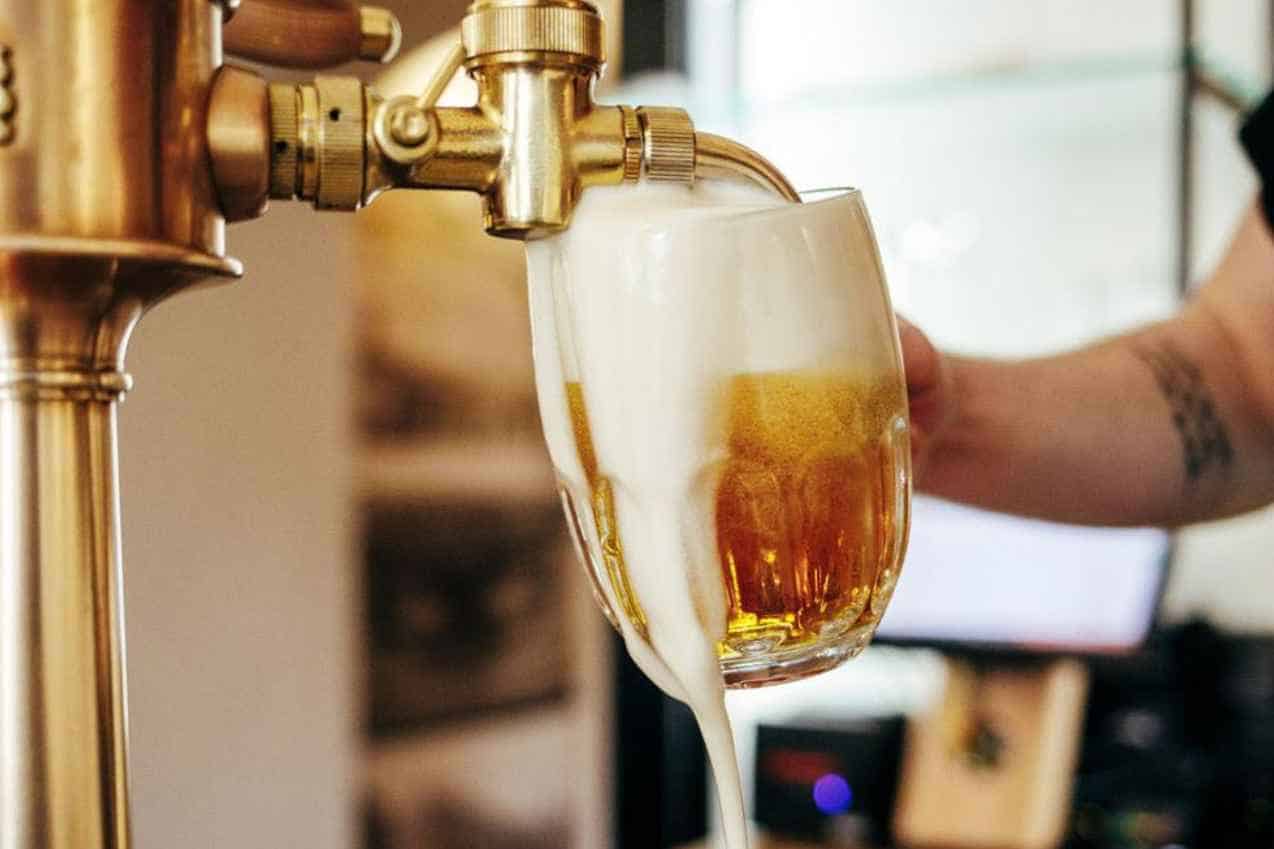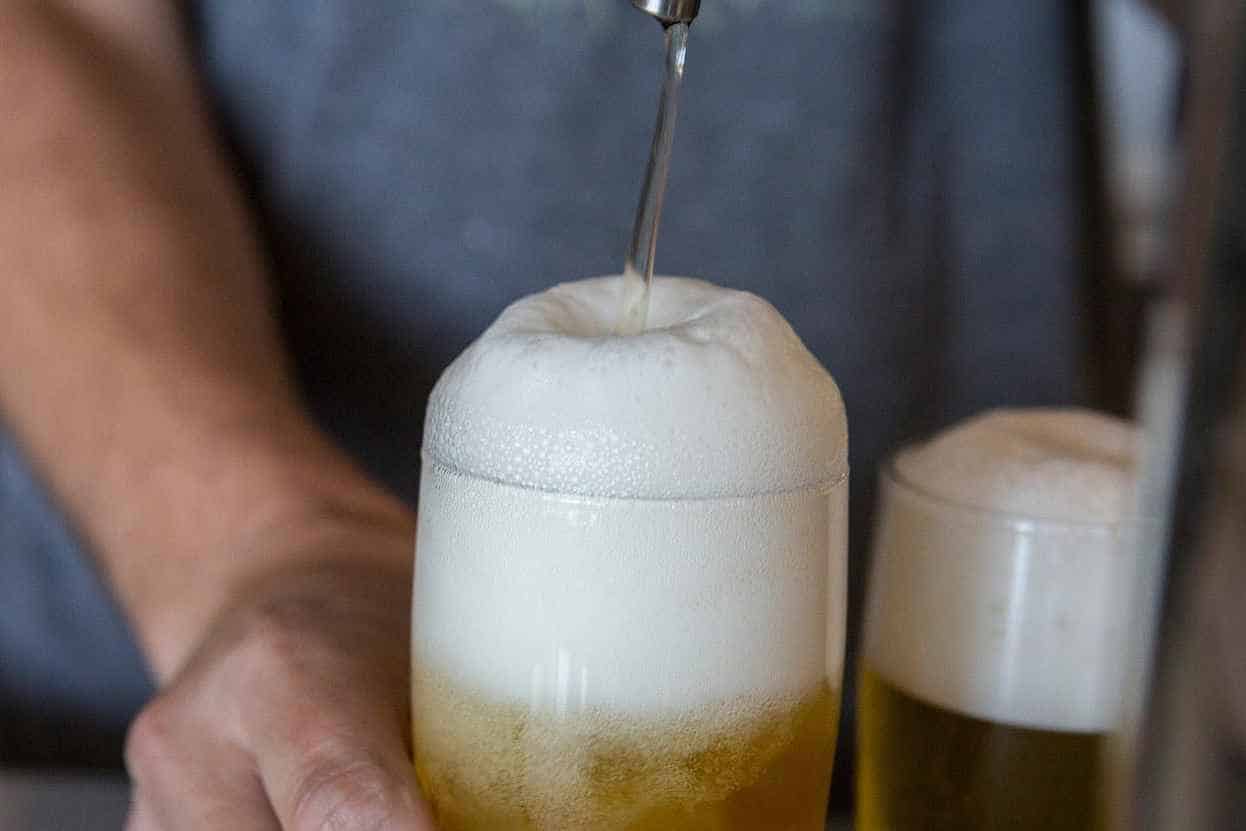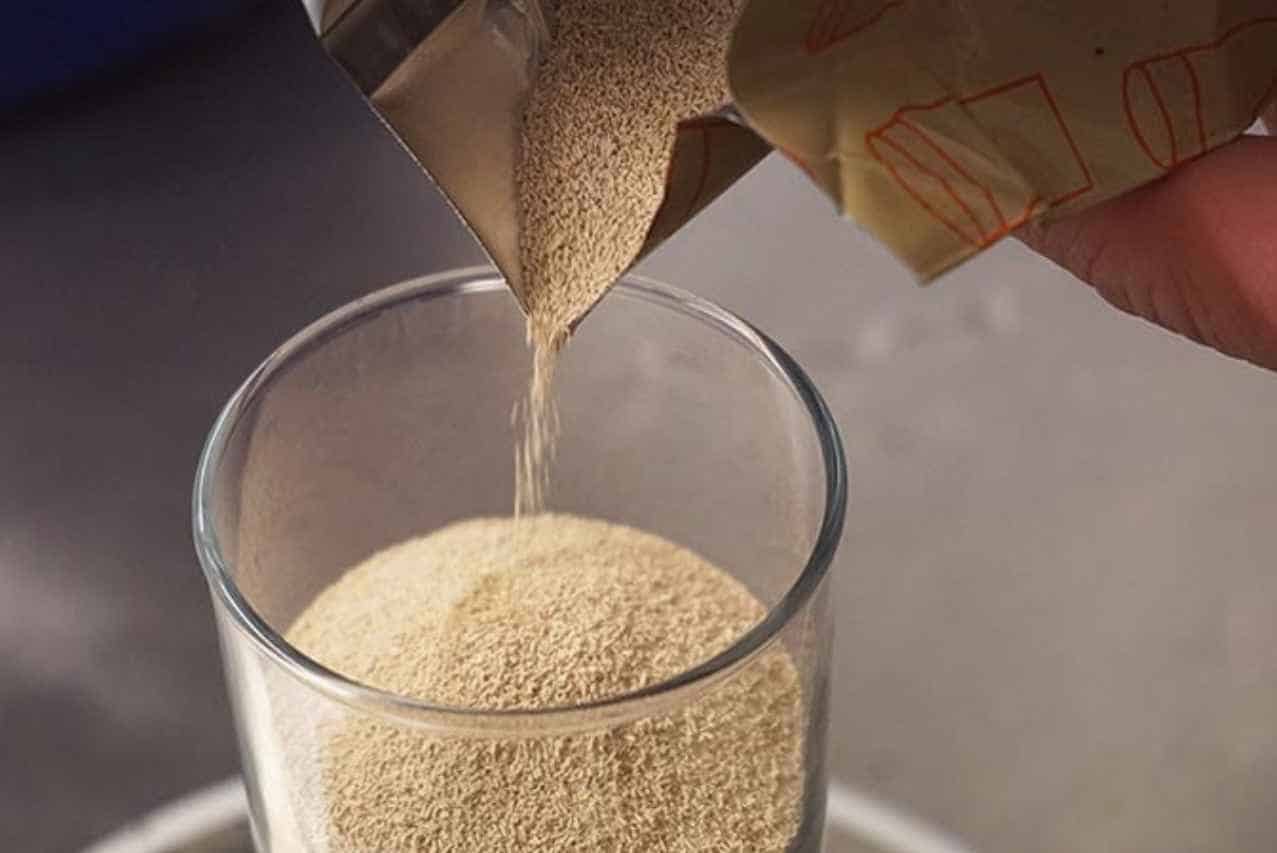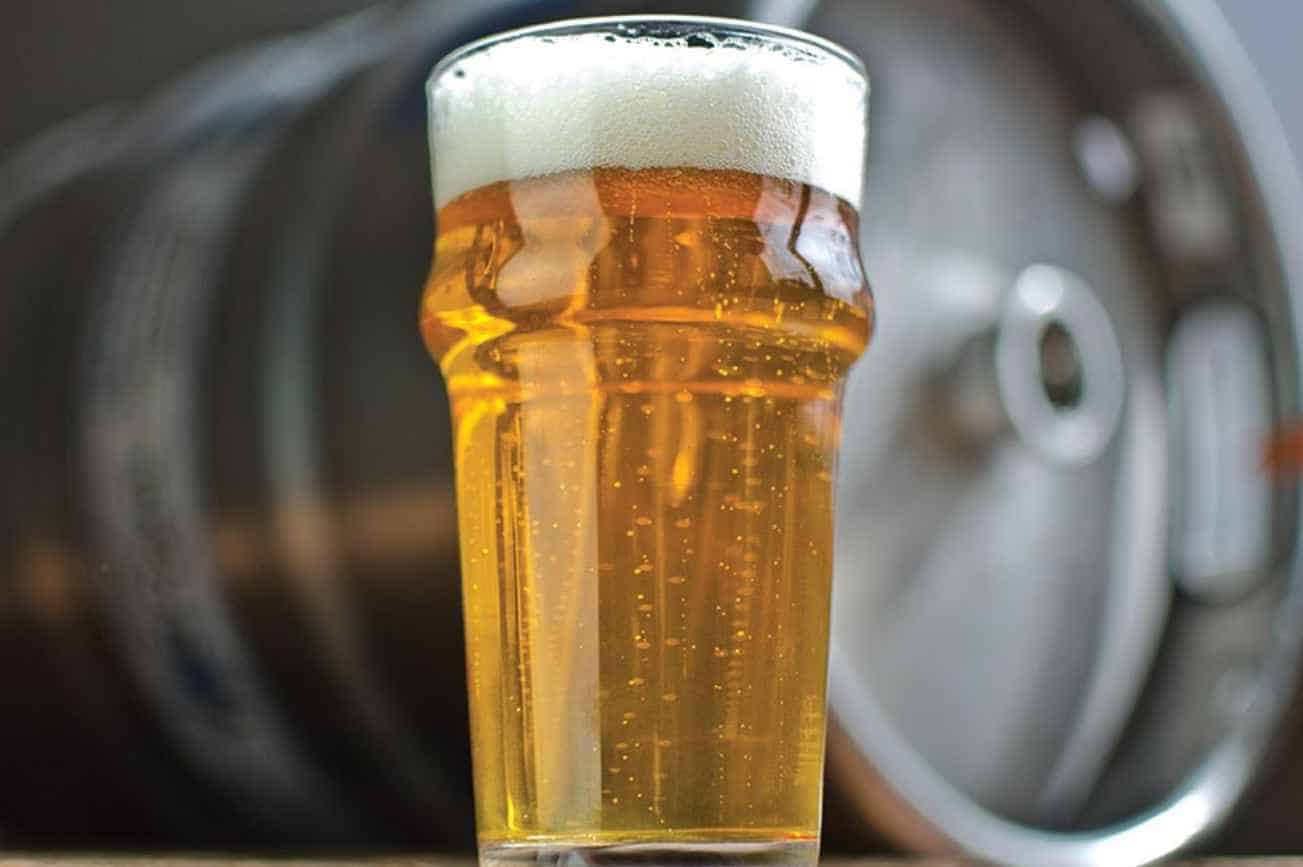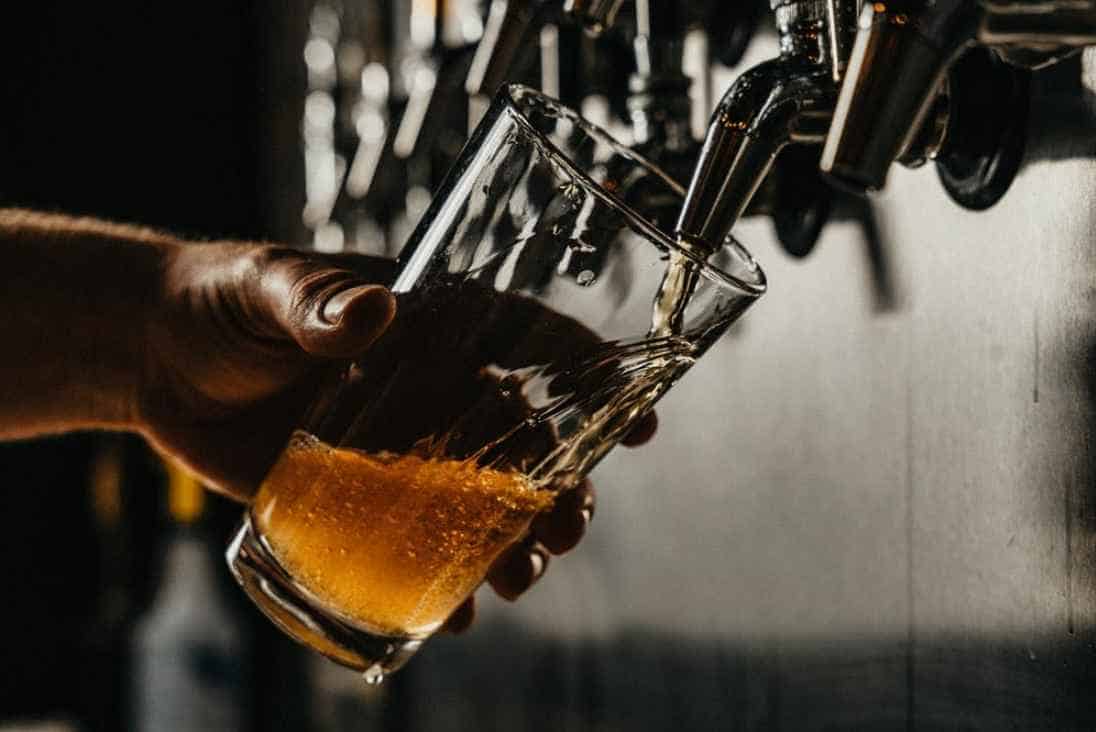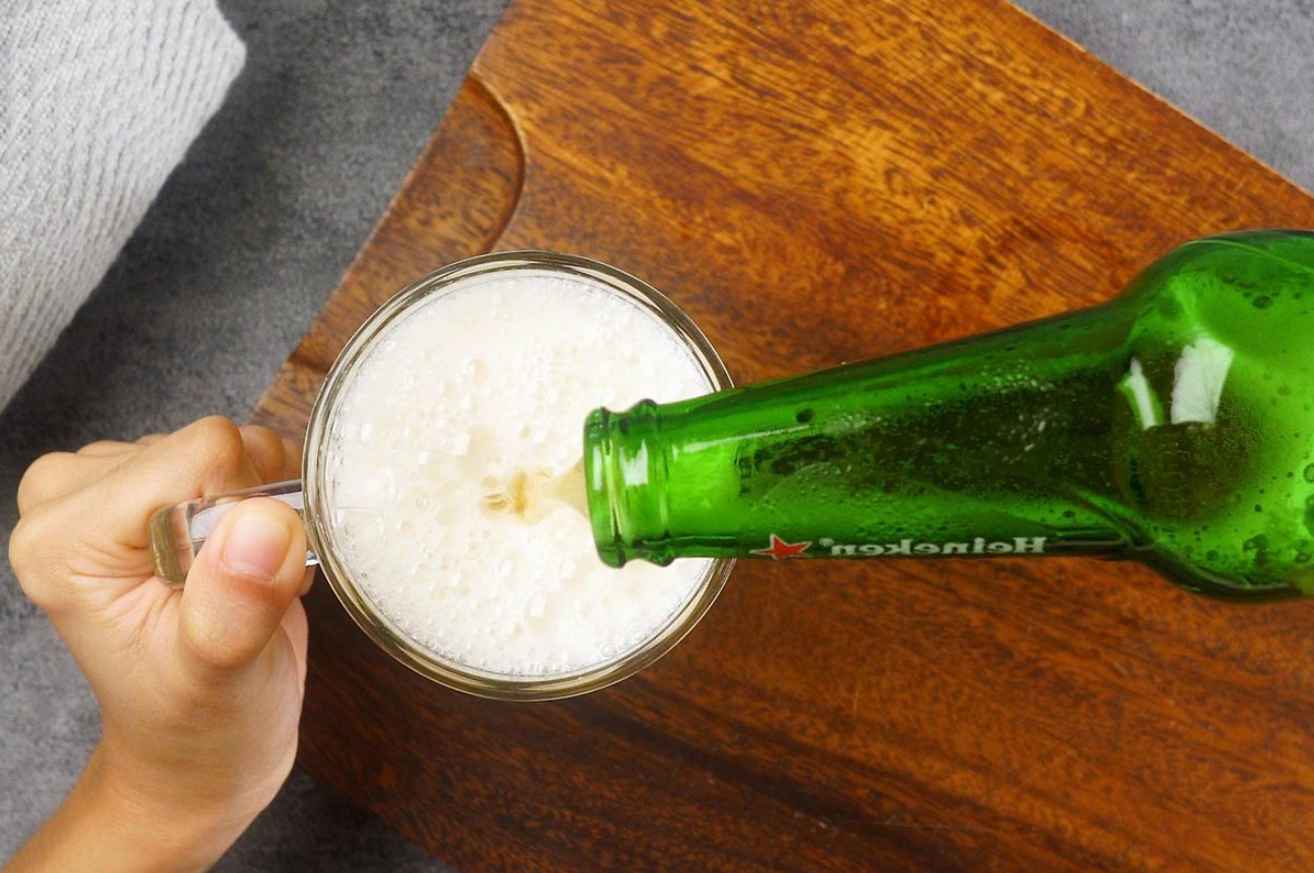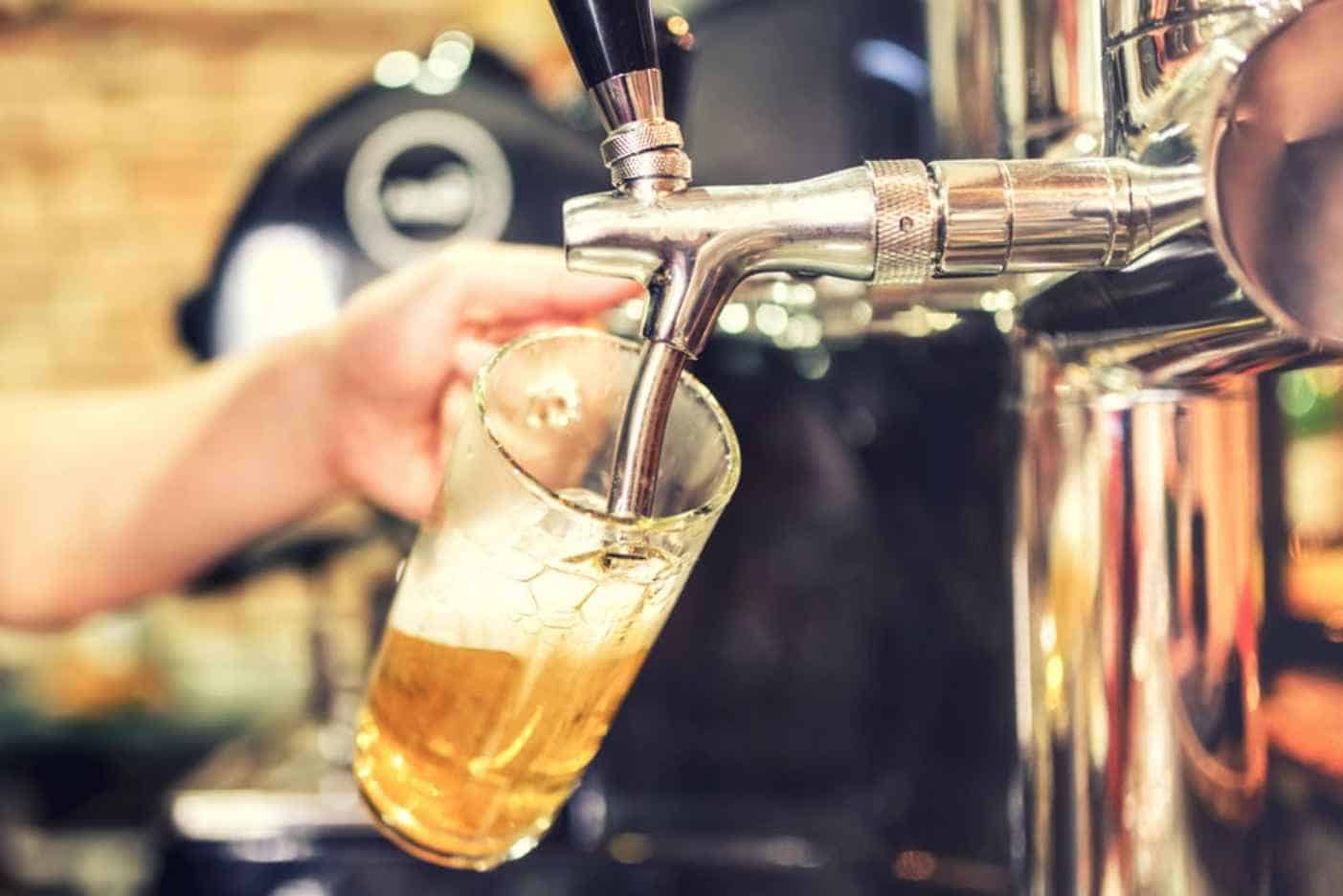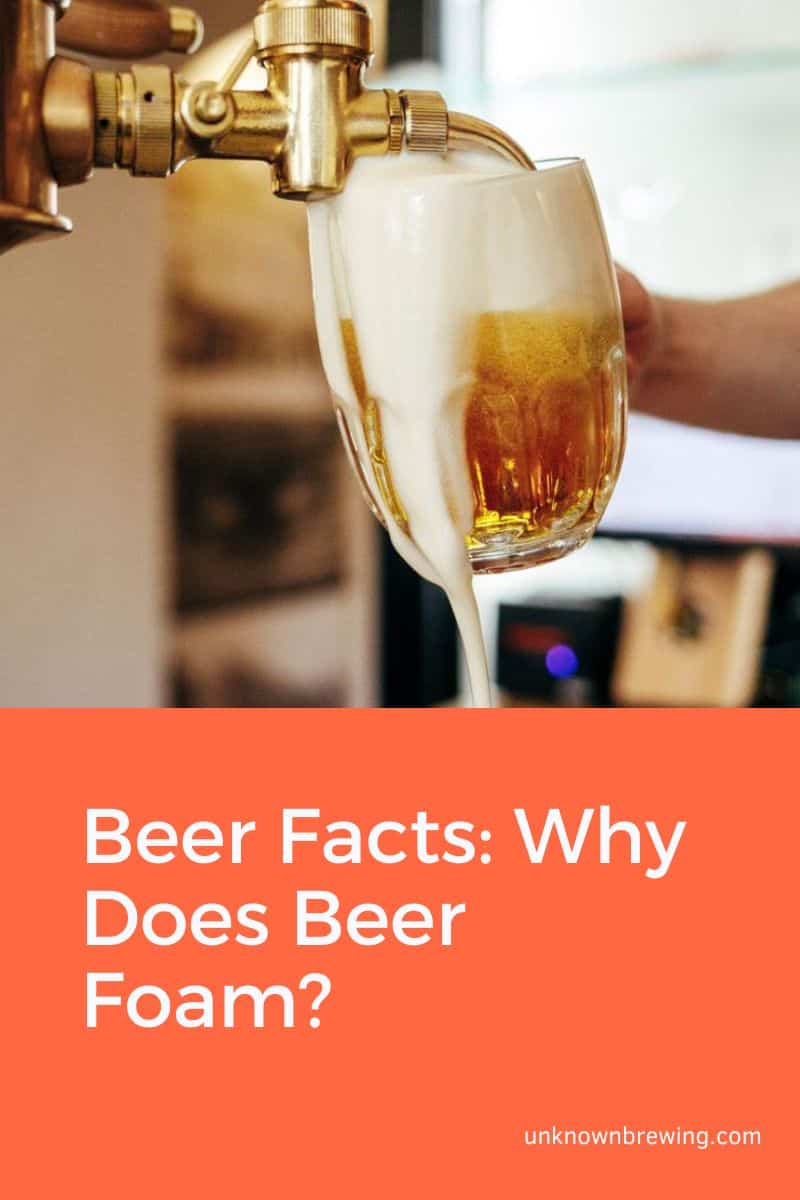I have always been fascinated by the science behind beers. It’s interesting how there are so many things involved in the production of one beverage, including the formation of beer foam. With that said, have you ever asked the question “why does beer foam”? I guess we will find out together!
Beer Foam: What’s Up With This?
When you step into a bar and order a glass of beer, you have probably noticed something frothy sitting on top of your drink. The froth of bubbles that you see is what you call a foam or head. Some people also refer to this as the beer’s “collar”.
Regardless of what you call this, they are pretty visible, especially if the beer was just freshly transferred to a glass or mug.
If you think the foam is just there for decoration and whatnot, that’s where you are wrong. The beer foam is there for several reasons and they are actually essential to the overall beer drinking experience.
Seeing good foam formation adds some sort of appeal to the beer. It’s like you can’t wait to take a sip of the beer after seeing it.
While beer foam is lovely to look at, it’s also an indication of the flavors that await you. As these bubbles rise to the surface, it carries along the elements of the beer that enhance its flavors and odor. It’s like there’s an epiphany of flavors bursting in your mouth as you drink that beer for the first time.
Why Does Beer Foam?
One of the main reasons why foam appears is because of gas. The gas responsible for this is Carbon Dioxide. During the production, fermentation and storing processes, this gas is produced. It’s safe to say there are a lot of chemical processes that come with making beer.
When it’s time to open the beer, the gas that has accumulated would surge and then form the foam you are seeing on top. The release of the Carbon Dioxide also pushes the residues of the ingredients to the top.
There is actually a term that you can use for the foam formation and it’s called nucleation.
What Affects Beer Foam?
If you are fond of drinking beers, I’m sure you have noticed the differences in their foams whenever you pour them into glasses. Some beers have more foam than others and that’s not something unusual.
If we dig deeper, there are actually several reasons why a beer might yield more or less foam. These foam elements, which can either be negative and positive, affect its formation and stability of the foam. They also have an impact on how good the beer foam is.
Yes To Yeast
Yeast is one of the most crucial ingredients when brewing beer, especially during fermentation. It contains Proteinase A – a protein that is known to negatively affect beer foam. There are several protein types that you find in beer, but Proteinase A is a major culprit.
During the fermentation process, the yeast should be able to work with the wort. There should be glucose conversion that leads to the production of alcohol.
However, when they fail to do that, you will find more Proteinase A in the brew. If that’s the case, the significant high number of Proteinase A reduces the stability of the beer foam.
No Love For Lipids
Beer ingredients such as barley and yeast contain lipids. These lipids are also pivotal in beer fermentation. However, they can also be harmful to the quality of the beer, as well as its foam stability.
The lipids in the beer are involved in the yeast’s metabolic process. However, in the end product, there should be no traces of lipids. If there’s any lipids around, the beer has a higher chance of going stale and its foam might not be as consistent and stable.
A Is For Alcohol
The amount of ethanol in your beer seems to be a determining factor of how much foam there will be. It seems the higher the alcohol percentage, the quicker the foam goes away. It has something to do with the beer’s surface tension being messed up, thus affecting the molecules that bind together to form the foam.
If you want to test this out yourself, try getting a beer with a high ABV percentage and see what happens. Do you see less foam forming here or not? If there’s less foam, then it’s safe to say this really rings true.
Improving Foam Retention
With the number of beer types and brands in the world, it’s unrealistic to expect all of them to have the same stable foam formation. However, this doesn’t mean that you should leave it at that, especially if you want to get the most out of its flavor and smell.
There are a couple of things you can do to improve the foam retention of your beer. Take note of these before you open and pour your favorite beer.
Make Sure It’s “Beer Clean”
The cleanliness you have in mind might not be enough if the goal is to boost the beer’s foam. You might have to consider the concept of “beer clean”. Before you start scratching your head, know that it’s not as difficult as you think.
The whole “Beer Clean” idea has something to do with making sure the beer glasses are free from any kind of residue that would affect the beer’s foam nucleation. Residues can come in many forms such as oil, detergent, dairy, and so much more.
It’s advisable to have glasses dedicated to your beers only. There’s less contamination with things that can disrupt the beer foam. You should also look into using glass cleaning soap or detergent that are compatible with beer glasses. If that’s hard to come by, you can always trust the power of baking soda.
It’s In Your Technique
If you are used to pouring beer in a certain way, you might want to rethink that, especially if you have noticed that you are not getting as much foam as you’d like. We usually pour the beer into the glass slowly and at a certain angle, hence why there’s less form than desired.
It’s not too late to learn the best ways to pour beer and get a good set of foam. Once you have mastered this, you can say sayonara to flat beer!
Keep That Lipstick Away
Have you noticed how fast the beer foam disappears after it touches your lipstick-covered lips? It’s like the foam goes away like magic as soon as contact is made. While I would love to credit this to the occult, this has something more to do with a protein.
The protein, LPT1, which you can find in beer ingredients, is a key component in the development of beer foam. When the protein found in foam makes a connection with your lipstick, which contains fat-based ingredients, the former hangs on to the latter.
Does Beer Foam Make You Feel Bloated?
There seems to be some confusion when it comes to this subject. Some people think that beer foam makes you feel bloated, but upon closer inspection, it seems the truth is the exact opposite.
As you know by now, beer foam is formed through the release of carbon dioxide. However, if the beer pouring method is poor, the gas is withheld and there is not enough foam. When this occurs, the gas that’s supposed to be set free via the foam goes into your stomach.
All that unreleased carbon dioxide stays in your system and it makes you feel bloated and stuffed. You would feel even more full if you add food into the mix.
Pouring Beer The Best Way To Get Good Foam
Now that we have learned about the factors that affect the stability and retention of beer foam, it’s high time we focus on perfecting our beer pouring ability.
Contrary to popular belief, it’s not as challenging as you imagine it to be. Yes, you might fail the first few times, but with some practice, you would be knocking it out of the park.
The Right Beer Glasses
It’s delightful to learn about the different glasses being used for beers. There’s a couple of them that are really good for foam heads, so you might want to look into these.
Once you have figured out which one best works for the kind of beer you are working with, that’s one obstacle out of the way. And one more thing, don’t forget about the “beer clean” mantra!
The Right Angle
Pouring beer at an ideal angle goes hand in hand with beer foam. Well, now would be a good time to use all that geometry knowledge you have!
Whether you are pouring beer from a can or tap, the angle you should be aiming for is 45 degrees. You should be holding the glass at this angle because this is the best possible way. When you are all set, start pouring the beer until the glass is about half-full.
When the beer has reached the halfway mark of the glass, straighten its angle and continue pouring until you are done. You should be able to see a good beer head right after this!
Free The Foam
With a better understanding of its purposes, the mystery behind why beer foams is no longer something unusual for you, me, and many others! Now that we have clarity, we can go our merry ways now and enjoy our elevated beer tasting adventures.

As a homebrewer, Michael would get frustrated about the lack of brewing information on the internet. After hundreds of gallons of spoilt batches, Micheal had enough. And he founded Unknown Brewing as a resource for homebrewers.
